- Главная
- Разное
- Бизнес и предпринимательство
- Образование
- Развлечения
- Государство
- Спорт
- Графика
- Культурология
- Еда и кулинария
- Лингвистика
- Религиоведение
- Черчение
- Физкультура
- ИЗО
- Психология
- Социология
- Английский язык
- Астрономия
- Алгебра
- Биология
- География
- Геометрия
- Детские презентации
- Информатика
- История
- Литература
- Маркетинг
- Математика
- Медицина
- Менеджмент
- Музыка
- МХК
- Немецкий язык
- ОБЖ
- Обществознание
- Окружающий мир
- Педагогика
- Русский язык
- Технология
- Физика
- Философия
- Химия
- Шаблоны, картинки для презентаций
- Экология
- Экономика
- Юриспруденция
Что такое findslide.org?
FindSlide.org - это сайт презентаций, докладов, шаблонов в формате PowerPoint.
Обратная связь
Email: Нажмите что бы посмотреть
Презентация на тему Questionnaire. Characteristics of a good questionnaire
Содержание
- 2. CONTENTQuestionnaireCharacteristics of the good questionnaireFunctions Types Questionnaire as an instrumentReliability ValidityConstructing a questionnaire
- 3. QUESTIONNAIREA set of predetermined questions for all
- 4. CHARACTERISTICS OF A GOOD QUESTIONNAIREShould be concerned
- 5. FUNCTIONS OF QUESTIONNAIREDESCRITION: The questionnaire provides description about
- 6. TYPES OF QUESTIONNAIREBased upon the type of
- 7. QUESTIONNAIRE AS INSTRUMENTSMost survey research relies on
- 8. DEMOGRAPHIC VARIABLESDemographic variables are used to describe
- 9. PREFERENCES AND ATTITUDESIndividuals’ preferences and attitudesFor example brand of coffee preferred, attitude regarding public issues
- 10. SELF REPORT SCALESUsed to measure peoples judgments
- 11. RELIABILITYReliability refers to the consistency of measurement.Reliable
- 12. VALIDITYIt refers to the truthfulness of a
- 13. CONSTRUCTING A QUESTIONNAIRE Deciding type, writing a draft,
- 14. WORDINGS OF THE QUESTIONNAIRE:Simplicity in languageAvoid ambiguityAvoid
- 15. ORDER OF THE QUESTIONS:Begin with simple and
- 16. CONCLUSIONQuestionnaire are the main and easy way
- 17. REFERENCESingh, A.K. (1997). Tests, Measurements and Research
- 18. Скачать презентацию
- 19. Похожие презентации
CONTENTQuestionnaireCharacteristics of the good questionnaireFunctions Types Questionnaire as an instrumentReliability ValidityConstructing a questionnaire
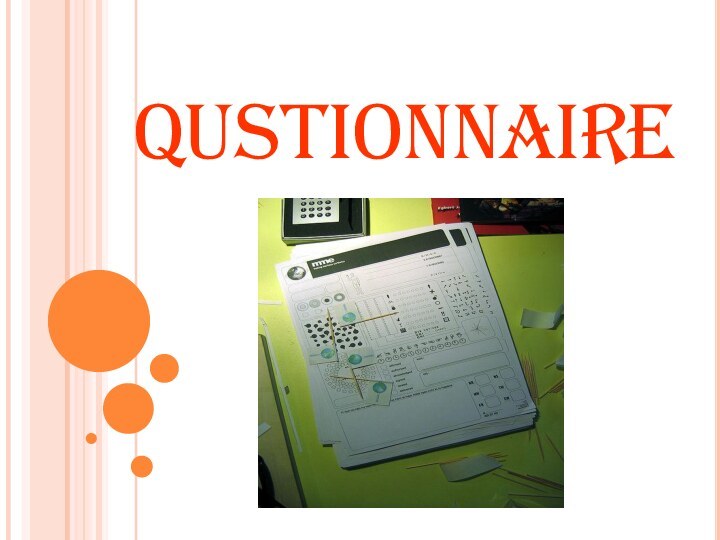

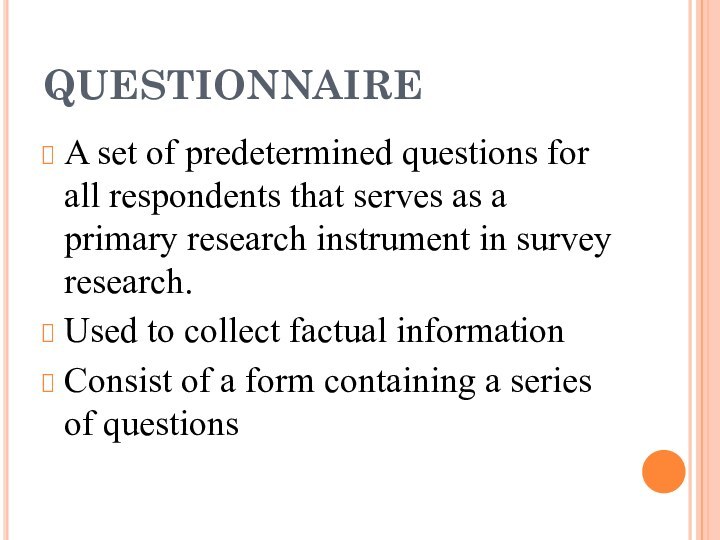



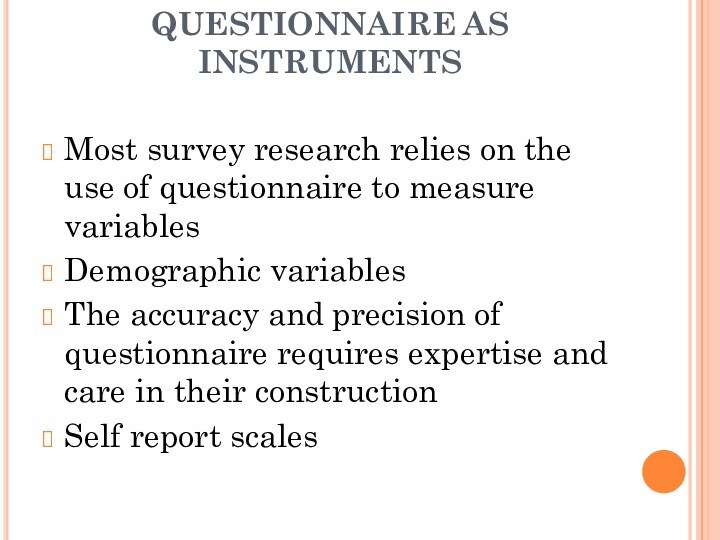
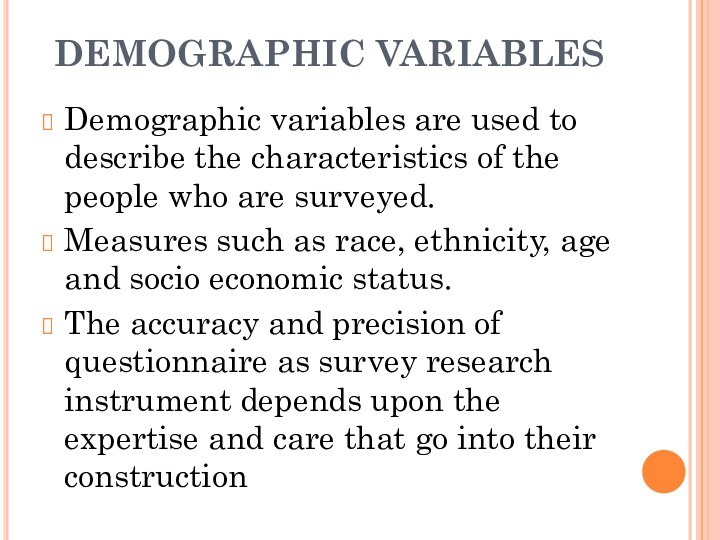



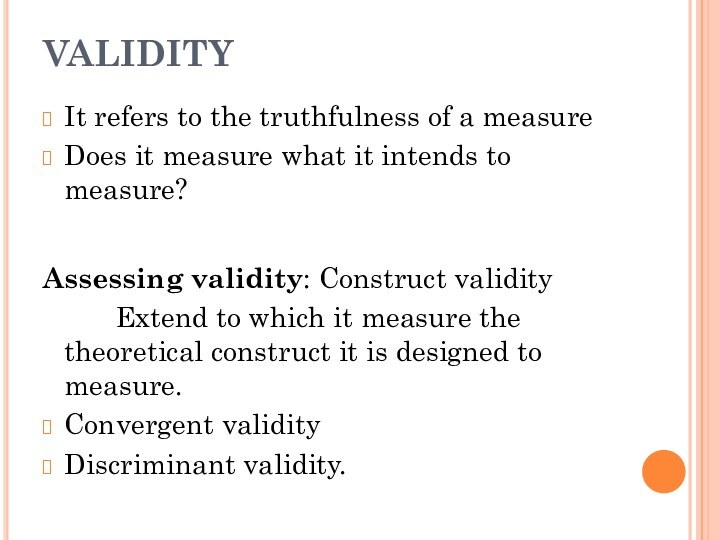
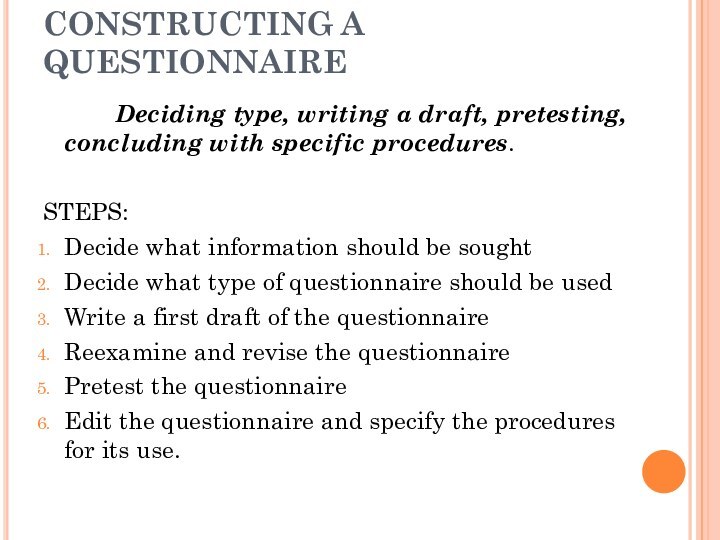

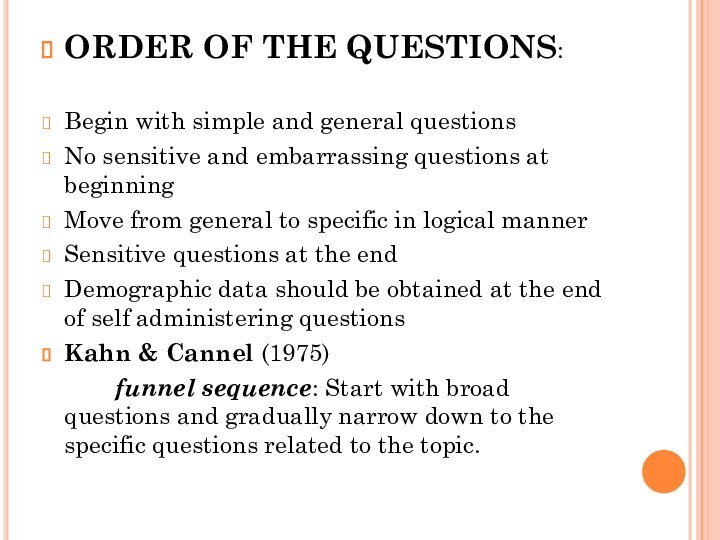

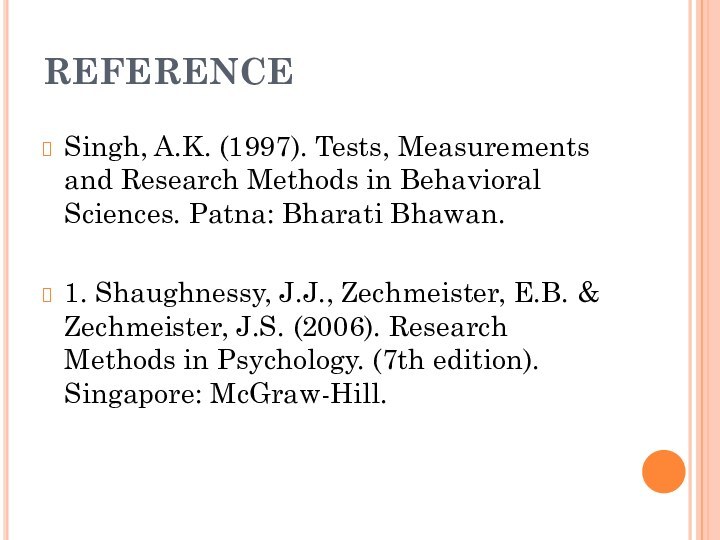

Слайд 2
CONTENT
Questionnaire
Characteristics of the good questionnaire
Functions
Types
Questionnaire as
an instrument
Слайд 3
QUESTIONNAIRE
A set of predetermined questions for all respondents
that serves as a primary research instrument in survey
research.Used to collect factual information
Consist of a form containing a series of questions
Слайд 4
CHARACTERISTICS OF A GOOD QUESTIONNAIRE
Should be concerned with
specific and relevant topic
Should be short
Directions and wording should
be simple and clearQuestions should be objective
Embarrassing questions, presuming questions and hypothetical questions should be avoided
Should be presented in a good order
Should be attractive, neatly printed and clearly arranged
Слайд 5
FUNCTIONS OF QUESTIONNAIRE
DESCRITION:
The questionnaire provides description about age,
sex, marital status, occupation, income, political affiliation religious affiliation,
etc.MEASUREMENT:
Measurement of individual and/or group variables like attitude, opinion, traits and habits of persons.
Слайд 6
TYPES OF QUESTIONNAIRE
Based upon the type of respond
required,
Fixed- response questionnaire.
Open- end questionnaire.
Based upon the method
of administering,Mail questionnaire
Face-to-face administered questionnaire
Слайд 7
QUESTIONNAIRE AS INSTRUMENTS
Most survey research relies on the
use of questionnaire to measure variables
Demographic variables
The accuracy and
precision of questionnaire requires expertise and care in their constructionSelf report scales
Слайд 8
DEMOGRAPHIC VARIABLES
Demographic variables are used to describe the
characteristics of the people who are surveyed.
Measures such
as race, ethnicity, age and socio economic status.The accuracy and precision of questionnaire as survey research instrument depends upon the expertise and care that go into their construction
Слайд 9
PREFERENCES AND ATTITUDES
Individuals’ preferences and attitudes
For example brand
of coffee preferred, attitude regarding public issues
Слайд 10
SELF REPORT SCALES
Used to measure peoples judgments or
attitude about items presented on the scale
e.g., coffee, political
candidates, life eventsTo determine differences among people on some dimensions presented on the scale
e.g., personality traits, amount of stress
Слайд 11
RELIABILITY
Reliability refers to the consistency of measurement.
Reliable test
should yield similar(consistent) results each time it is taken
Common
method: test- retest reliabilityFACTORS AFFECTING RELIABILITY:
Number of items
Variability
Condition in which the questionnaire is administered
Слайд 12
VALIDITY
It refers to the truthfulness of a measure
Does
it measure what it intends to measure?
Assessing validity: Construct
validityExtend to which it measure the theoretical construct it is designed to measure.
Convergent validity
Discriminant validity.
Слайд 13
CONSTRUCTING A QUESTIONNAIRE
Deciding type, writing a draft, pretesting,
concluding with specific procedures.
STEPS:
Decide what information should be sought
Decide
what type of questionnaire should be usedWrite a first draft of the questionnaire
Reexamine and revise the questionnaire
Pretest the questionnaire
Edit the questionnaire and specify the procedures for its use.
Слайд 14
WORDINGS OF THE QUESTIONNAIRE:
Simplicity in language
Avoid ambiguity
Avoid vague
words
Avoid embarrassing questions
Avoid double negatives
Avoid leading questions
Presuming questions
Hypothetical questions
Слайд 15
ORDER OF THE QUESTIONS:
Begin with simple and general
questions
No sensitive and embarrassing questions at beginning
Move from general
to specific in logical mannerSensitive questions at the end
Demographic data should be obtained at the end of self administering questions
Kahn & Cannel (1975)
funnel sequence: Start with broad questions and gradually narrow down to the specific questions related to the topic.
Слайд 16
CONCLUSION
Questionnaire are the main and easy way collecting
data
But the questionnaire must be highly reliable and valid.
Using
standardized questionnaires will give us the appropriate data and will yield a valid studyOne must follow all the basic guidelines and methods of constructing a questionnaire and test it before using it.





























